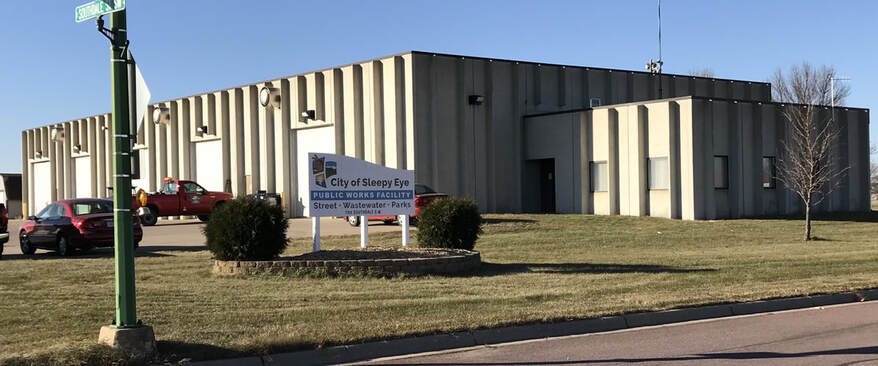- Home
-
Living
- Doing Business
-
Government
-
I Want To . . .
- Report . . . >
- Pay . . . >
- Contact . . . >
- Apply For . . . >
- Sign-Up . . . >
-
View . . .
>
- 2024 Area Road Work Information
- Agendas and Minutes
- City Calendars
- City Codes
- City's Recent Ordinances
- City's Recent Resolutions
- City's Facebook Feeds
- City Lots For Sale
- City Zone Map
- Compost Site Information
- Crime Statistics
- Driver's License, Tabs, Title & Registration Information
- Garbage Pickup Information
- High School OJT Program
- Recreational Activities
- SE Demographics
- Voting Information
WHO IS RESPONSIBLE FOR ROADS WITHIN THE CITY?
The responsibility for constructing and maintaining city roads falls under one of these jurisdictions:
- STATE - Interstates and trunk highways
- COUNTY - Most of the minor arterial and some of the collector roadways with in the city
- CITY OR TOWNSHIP - Any public roadways that are not under the jurisdiction of the state or county. These are generally residential streets and some collector roadways
- PRIVATE - Roads constructed and maintained by adjacent residents or businesses
Although the city does not have direct responsibility for state and county roads within their boundaries, the city is usually involved in the planning, design, construction, and partial financing of these roads because of the impact on residents and other infrastructure.
|
Link to our Adopt-A-Drain Program
|
Tom Schroepfer
Street Department |
HOW ARE ROADS CLASSIFIED?
There are four primary roadway categories. The higher a roadway's functional classification, the more important the roadway is for moving more vehicles at a higher rate of speed. Roadways are classified as principal arterials, minor arterials, collectors and local roads.
HOW ARE ROADWAYS DESIGNED?
The design of a roadway affects its safety and capacity and is governed by uniform standards.
- Traffic lanes are generally 11 or 12 feet wide
- Turn lanes are often used when a side street or driveway access poses a safety concern
- Other roadway elements include parking area, shoulders for disabled vehicles, bicycle lanes, and designated transit lanes or pullouts
The Move to "Complete Streets"
Non-vehicular modes of transportation are increasingly being integrated into today's street designs. "Complete Streets" simply means designing the roadway corridor to accommodate alternate modes of transportation:
- BICYCLE - Studies have shown that bicycle facilities are more frequently used if they connect to or are part of a larger network, or access to bicycle-friendly destinations or developments.
- PEDESTRIANS - Accommodations for pedestrians is the general practice along nearly all roadways, no matter how many users are anticipated. In addition, the Americans with Disabilities Act (ADA) requires that accommodations be made for disabled users on a public facilities.
WHAT ARE THE COMPONENTS OF A TYPICAL ROADWAY?
Building or maintaining a roadway - especially in an urban environment - usually involves much more than just the road. Some of the elements that need to be planned for and designed include:
|
|
|
HOW DO WE BUILD AND MAINTAIN OUR INFRASTRUCTURE?
In general, the useful life of most city infrastructure is 15 years or more. It can be extremely expensive to build and most construction is funded with non-operational sources. Planning periods for any new construction are long and construction itself can be lengthy and disruptive t the community. The end result may be satisfying, but it usually comes with ongoing maintenance costs, as well.
CONSTRUCTION: THE IMPORTANCE OF CAPITAL IMPROVEMENT PROGRAMS (CIPS)
Most communities rely on CIPs to help them identify, prioritize and plan for the orderly replacement of their capital assets. CIPs have many benefits that make them indispensable.
- You can coordinate multiple projects at all levels of your community and government
- Funding for required maintenance of infrastructure, such as maintenance and cleaning of storm water ponds, can be identified and programed
- Your can plan for economic development in an efficient and orderly manner
- Civic participation is improved as your community members can easily see your goals and plans
- Projects are prioritized and finances are easily monitored
WHAT ARE MN CHAPTER 429 SPECIAL ASSESSMENTS?
Most cities use special assessments to fund at least a portion of roadway improvement projects:
- A special assessment is a fee levied against properties for a public improvement that benefits the owners of the properties.
- Cities usually establish a policy for calculating special assessment amounts based on frontage of the lot, the area, or the individual household unit.
THE SPECIAL ASSESSMENT PROCESS
- Project Initiation
By petition or council vote. - Feasibility Report
Includes: when the project is needed; funds to pay the city's share; cost estimates; whether the improvement is cost effective. Also includes estimate of assessment amount and method for calculation. - Improvement Hearing
City council must discuss a specific improvement before ordering it. Notice of the hearing must be published in the official newspaper and mailed to all effected property owners. - Order Improvements
Within six months of the improvement hearing, the council can pass a resolution to order improvements. - Construction Plans and Bidding
Plans and specifications are prepared and put out for competitive bidding. - Assessment Hearing
Allows property owners to express concerns about the assessment. Held following specific notice - before or after project is complete. - Adopt Assessment Roll
Council must adopt specific assessments by passing a resolution that typically includes an interest rate plus payment timelines. - Challenging Special Assessments
Property owners can object to assessments at the hearing but must file a District Court appeal within 30 days. They must provide evidence that the assessment fee total does not meet or exceed the benefit to the property. Concerns can be addressed in various ways; a ruling by a judge is the last resort.
We Would Love to Have You Visit Soon!
City Hall Hours
Monday - Friday: 7:30am-4:00pm
|
City Hall Phone #
507-794-3731
|
City Hall Location
200 Main St E, Sleepy Eye, MN 56085
|
- Home
-
Living
- Doing Business
-
Government
-
I Want To . . .
- Report . . . >
- Pay . . . >
- Contact . . . >
- Apply For . . . >
- Sign-Up . . . >
-
View . . .
>
- 2024 Area Road Work Information
- Agendas and Minutes
- City Calendars
- City Codes
- City's Recent Ordinances
- City's Recent Resolutions
- City's Facebook Feeds
- City Lots For Sale
- City Zone Map
- Compost Site Information
- Crime Statistics
- Driver's License, Tabs, Title & Registration Information
- Garbage Pickup Information
- High School OJT Program
- Recreational Activities
- SE Demographics
- Voting Information


